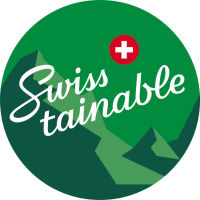Sustainable Gastronomy
Intro
Sustainability is a big word. And in gastronomy in particular, many aspects are involved. From energy savings that are important, but which guests barely even notice, right through to carefully chosen ingredients, Swiss restaurants employ sustainable practices and are just waiting to be discovered.

Facts & figures What makes Switzerland particularly advanced in terms of sustainable gastronomy.
Earth-kind organic vegetables, social integration projects in the restaurant industry, or new technology for less food waste: the Swiss culinary industry has been working towards a more considerate and respectful approach to nature and to our dealings with one another for decades. Does that mean we’ve done enough already? Not at all. The number of initiatives for more sustainable gastronomy has never been higher than today. You can see and enjoy the change that is taking place at all levels of sustainable gastronomy.
- +5,000 More than 5,000 restaurants have joined the Too Good To Go movement in order to help combat food waste in the restaurant industry.
- 0% A growing number of restaurants are featuring vegetarian days once or even several days a week on which they avoid meat altogether.
- CHF 445 The Swiss had the highest per capita consumption of organic products in the world in 2020. This high demand is also reflected in the rising number of organic restaurants.
- 1999 The Blindekuh restaurant in Zurich opened its doors in 1999, and was the first dark dining restaurant in the world, in which guests are served by blind or visually impaired waiting staff.
Eating & drinking more sustainably Tips & tricks for guests
Look for the Swisstainable emblem.
The Swisstainable emblem lets you see at a glance which Swiss restaurants have committed to sustainability and actually put this into practice. The three designations of Committed, Engaged and Leading rank the restaurant’s level of accountability.
Regional and seasonal for more Swissness.
Asparagus, strawberries or squash – the list of seasonal products is long. Swiss restaurants just see it as natural that they should choose seasonal and regional fruits and vegetables to use in their dishes. You too should choose regional and seasonal foods to get the freshest and most authentic flavours!
Quality before quantity.
A traditional Valais meat and cheese board is not to be missed on your trip through Switzerland. Meat specialities are all about the quality – so that they taste better, and are better in terms of animal well-being and the environment. Which is why you should pay attention to Swiss labels, make more conscientious choices, eat in moderation and enjoy the surprising variety of Swiss vegetarian offerings. You won’t be disappointed!
Actively avoid food waste.
There is no question that Swiss specialities are irresistible. But ordering the right amount can quickly become challenging. So here’s a rule of thumb to follow: potentially having to order a second time is better than letting a too-large portion go to waste. And if you do end up overestimating how hungry you are, the restaurant will be happy to pack up your leftovers for you.